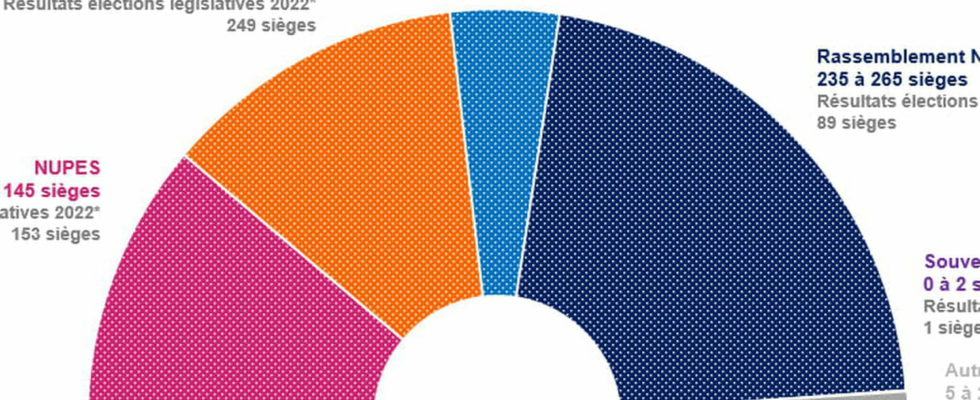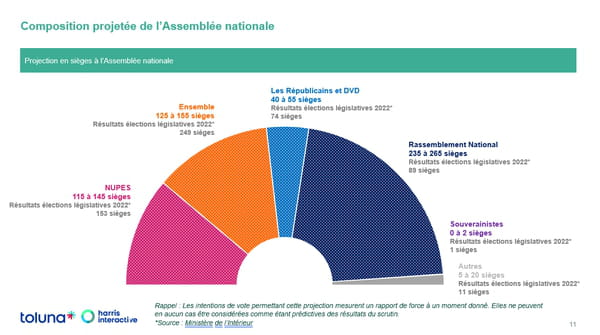The results of the legislative elections of June 30 and July 7, 2024 will determine which political parties will be responsible for governing France. Trends are already emerging.
It is an understatement to say that Emmanuel Macron surprised the French and all political personnel by announcing the dissolution of the National Assembly and the organization of early legislative elections, on June 30 and July 7, 2024. This election is one of the most important of the Fifth Republic, given the context of political crisis in which the country finds itself: the results of these 2024 legislative elections could in fact bring the extreme right to power, if it, alone or with allies, managed to obtain a majority in the National Assembly.
In this scenario, the current government would be dismissed and the National Rally would be responsible for forming a new ministerial team. The Prime Minister would come from the ranks of the extreme right and Jordan Bardella has already positioned himself to be the one who would be appointed to Matignon.
The campaign for these legislative elections which is opening is full of uncertainties, the results are not written in advance. Firstly because the political forces present are in the reconstitution phase: the left has recorded the formation of a “new popular front”, the far right is attracting part of the LR executives and the presidential majority is seeking to constitute a programmatic project and a broader alliance than the current one, by reaching out to socialists and part of the right. Each of these three blocs hope to be able to gather, following the results of the legislative elections on July 7, a majority around their political party.
What are the results of the polls on the legislative elections?
The legislative elections are taking place in 577 constituencies, with different candidates. Which means that there are actually 577 ballots. It is therefore very delicate and difficult to carry out national polls to report the results of these 2024 legislative elections. But global trends are emerging, on the voting intentions of the first round.
The Ifop Fiducial survey for LCI – Le Figaro and Sud Radio, carried out on June 10 and 11, gives the following results:
National gathering: 35%
Popular Front: 25%
Presidential majority: 18%
Republicans: 9%
Miscellaneous left: 5%
Winback: 4%
Miscellaneous right: 1.5%
Far left (LO, NPA, POI): 1%
Sovereignist right (DLF): 0.5%
A projection in number of seats was also made this beginning of the week by Tonu-Harris Interactive. This pollster gives ranges and considers that it is likely that the National Rally will win more seats than its competitors, but will not be able to obtain an absolute majority, necessary if it wants to govern without an alliance.
How do legislative elections work?
Legislative elections in France are organized according to a two-round, first-past-the-post majority system. The country is divided into 577 constituencies, each electing a deputy to the National Assembly. To be elected in the first round, a candidate must obtain more than 50% of the votes cast and a number of votes at least equal to 25% of registered voters. If no candidate meets these conditions, a second round is organized.
Only candidates having received at least 12.5% of the votes of registered voters can run in the second round. If only one candidate meets this condition, the second-place candidate is also qualified. The second round often sees strategic alliances and withdrawals between parties to maximize the chances of victory against a common opponent.
The results of legislative elections determine the parliamentary majority in the National Assembly. The party or coalition of parties with the greatest number of seats usually forms the government. If an absolute majority (289 seats) is reached, the government can adopt laws and implement its program without the need to systematically negotiate with other parties.
The President of the Republic appoints the Prime Minister, often from the majority party or the victorious coalition. The Prime Minister and his government must then obtain the confidence of the National Assembly. A stable parliamentary majority allows the government to function effectively and carry out its reforms.
In the event of an absence of an absolute majority for a single party, coalition governments can be formed. If the President of the Republic and the parliamentary majority belong to opposing parties, a situation of cohabitation occurs. In this case, the Prime Minister, who holds day-to-day executive power, may have political views that diverge from those of the President, leading to tensions and compromises.

